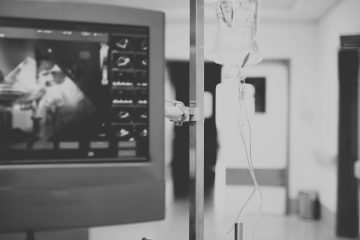What Happened On October 11th?
On October 11, 1984, aboard the Space Shuttle Challenger, Kathryn D. Sullivan prepared for a mission that reshaped American spaceflight. As the shuttle raced through the darkness at 17,500 miles per hour, she and fellow astronaut David Leestma got ready for an extravehicular activity (EVA), or spacewalk. They opened the shuttle’s cargo bay doors, exposing a vivid view of Earth’s colors against the blackness of space, which emphasized the importance of their mission. Every movement had been practiced with precision, but as Sullivan stood at the airlock’s edge, she felt the magnitude of the moment—an opportunity to accomplish her task and demonstrate new capabilities.
At exactly 7:38 AM Eastern Time, Sullivan exited the airlock and became the first American woman to walk in space. She floated steadily, adjusting to the weightless environment as the Earth rotated beneath her. Her spacesuit, built to handle the extremes of space, limited her range of motion, making each movement slow and precise. This mission involved more than just making history; Sullivan aimed to test NASA’s Orbital Refueling System (ORS). The ORS simulated the refueling of a satellite using hydrazine, a critical and toxic propellant. Sullivan’s success would prove that astronauts could manage delicate tasks while in orbit, which would open possibilities for future satellite maintenance.
Sullivan moved into position and gazed down at Earth, seeing a world she had explored as an oceanographer and geologist. She saw the vast oceans, rugged mountains, and swirling clouds in sharp detail. While she had previously orbited the planet, floating outside the shuttle transformed her view, giving her a direct connection to the world below.
Sullivan and Leestma then began the ORS test. They guided hoses, aligned valves, and used tools in the weightless environment of space. Engineers had spent years refining the system, adapting equipment built for Earth to operate without gravity. Before the mission, Sullivan and Leestma had practiced the maneuvers in NASA’s Neutral Buoyancy Lab, an enormous underwater training area. Despite their preparation, the zero-gravity conditions in space presented new challenges. Every motion had consequences; a small mistake could send tools drifting or damage vital parts of the setup. Sullivan connected the fuel line to a mock satellite nozzle, proving that the ORS could function properly and safely transfer hydrazine.
NASA’s choice to include women like Sullivan in their astronaut corps marked a crucial change in the organization’s history. When she joined in 1978 as part of the “Thirty-Five New Guys,” she entered a program that had previously excluded women. The Soviets had already sent women into space, so NASA opened its doors, motivated by both progress abroad and pressure to diversify. Sullivan and her peers still had to navigate a male-dominated environment, often facing intense scrutiny. Reporters often asked questions focused more on her gender than her skills. When one journalist asked Sullivan if she ever cried during training setbacks, she replied, “Why would I? We’re here to solve problems, not to get emotional about them.” Her straightforward response reflected the mindset of the women in her class, who aimed to prove their abilities without being defined by their gender.
NASA selected Sullivan not only for her academic background but for her experience piloting submersibles as an oceanographer. This gave her skills directly applicable to space missions. She had operated complex underwater equipment in extreme environments, and this experience prepared her for her work in space. She applied her knowledge from deep-sea dives to navigate the challenges of floating in a vacuum. The similarity between underwater exploration and spacewalks influenced NASA’s decision to include her in the mission.
Sullivan’s mission used technology specifically developed for her EVA. The wrench she used to secure the fuel line included a sophisticated locking mechanism. This feature ensured that the tool wouldn’t detach during use, an essential safety measure. Engineers finalized its design just weeks before the launch, demonstrating the intense preparation and quick adaptation required for the mission.
Her spacewalk provided a deeply personal experience beyond its technical challenges. She later spoke about the silence of space as “almost sacred,” contrasting it with the constant hum of shuttle systems. The stillness amplified her sense of vastness. As she floated, Sullivan mentally mapped Earth’s coastlines and mountain ranges far below. This habit, which she had developed during her years as a pilot, helped her feel a connection to her surroundings amid the immensity.
Sullivan and Leestma reentered the shuttle after demonstrating that astronauts could conduct complex satellite maintenance in orbit. Their success showed that astronauts could manage delicate repairs efficiently and safely, findings that would shape future missions. Sullivan’s work helped NASA develop new methods for future satellite repairs, like those required for the Hubble Space Telescope.





